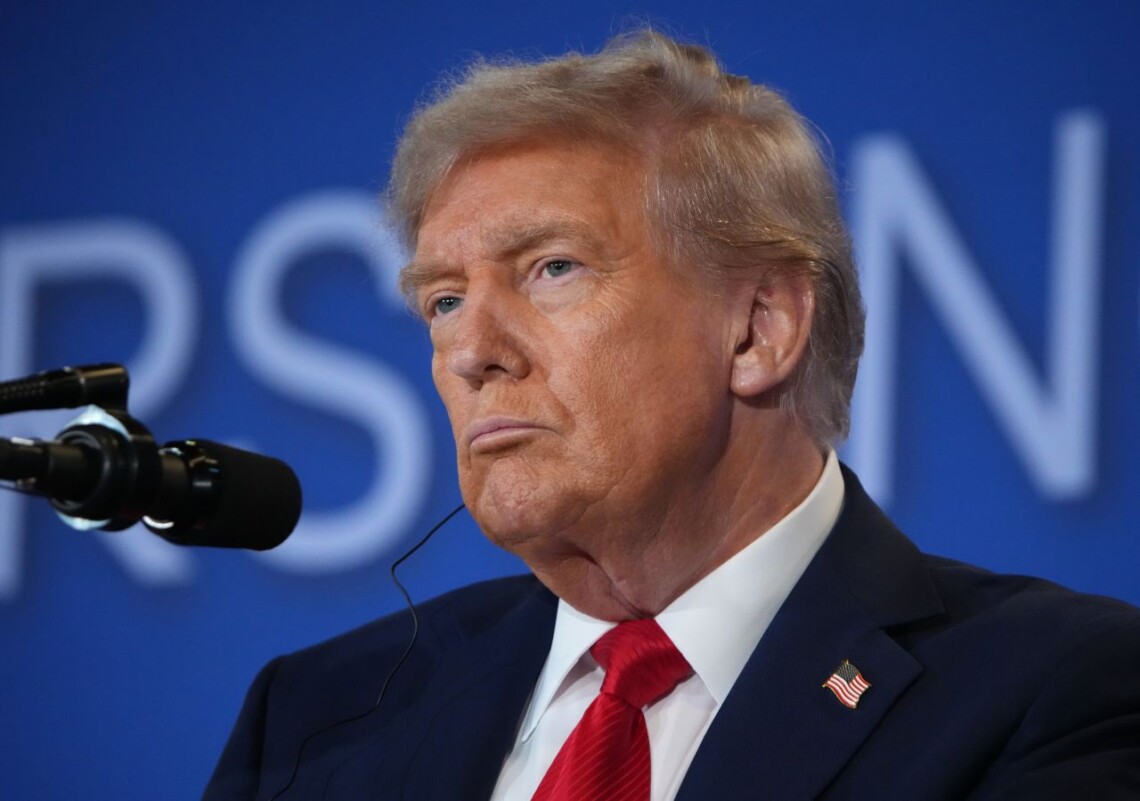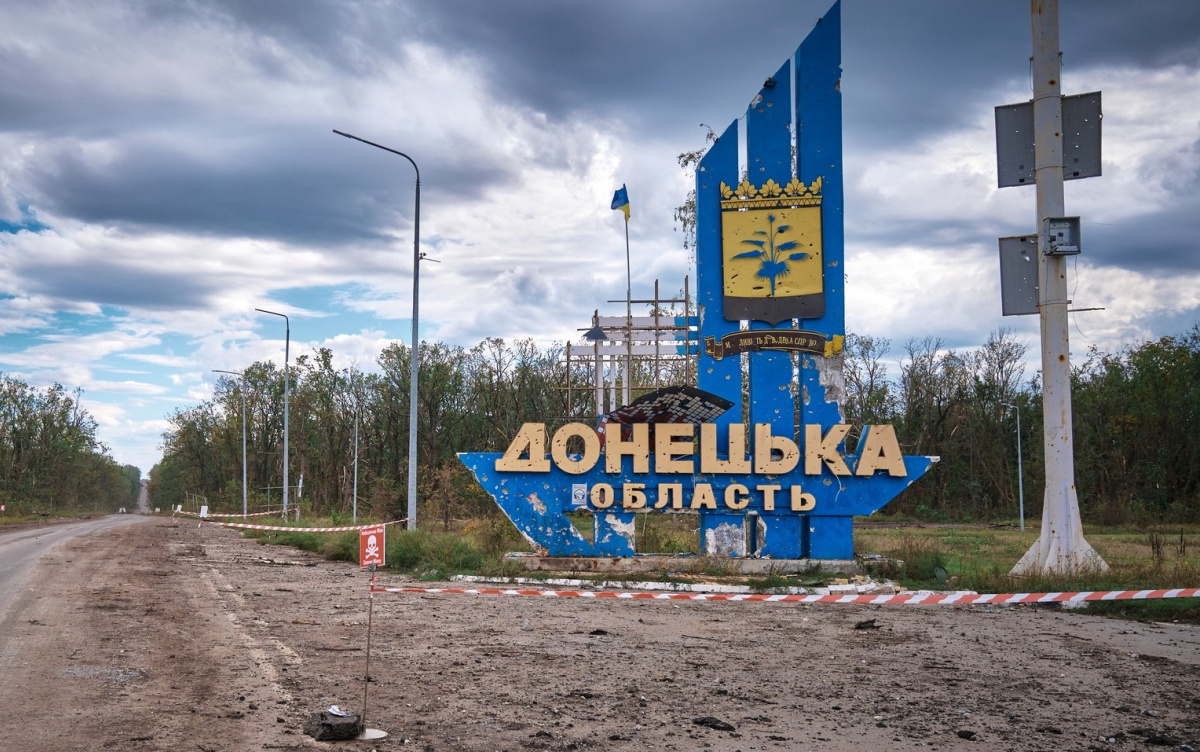“The war in Ukraine continues and is constantly intensifying. In recent months, a significant “cooling” of the peace track has been recorded: it was clear that there is no chance for peace in the near future. But last week, the process was unexpectedly unblocked: US President Donald Trump had a long conversation with Russian dictator Vladimir Putin, after which he announced a meeting between the leaders of America and the Russian Federation in the capital of Hungary”, — write on: ua.news
The war in Ukraine continues and is constantly intensifying. In recent months, a significant “cooling” of the peace track has been recorded: it was clear that there is no chance for peace in the near future.
But last week, the process was unexpectedly unblocked: US President Donald Trump had a long conversation with Russian dictator Vladimir Putin, after which announced a meeting between the leaders of America and the Russian Federation in the capital of Hungary — Budapest. The next day, the head of the White House met with President Zelensky.
All this gave hope for at least some breakthrough in settlement. But Moscow’s conditions remained as tough, Putin does not want to make any compromises, and as a pretext for starting a conversation, he demands to give him the Ukrainian Donbas. Against this background, a disappointed Trump announced the cancellation of the Budapest summit and imposed new sanctions against the Russian Federation.
Putin’s rigidity, stubbornness and fundamental uncompromisingness are widely known. But the question arises: why is the Russian military-political machine so entrenched in Donbas? Why did it become a “Rube issue” and why does the Kremlin need this Ukrainian region so much?
The answer lies in the plane of four inextricably linked dimensions, which go far beyond ideological slogans about “protecting our people”: resource, military, (geo)political and symbolic.
Budapest is everything: Trump is disappointed with Putin
Exactly one week ago, on Thursday, October 16, the American leader had a long telephone conversation with his Russian counterpart. It was Moscow that initiated the conversation. At that time, there were active discussions about the transfer to Ukraine Tomahawk missiles. Obviously, Putin was worried about this, so he decided to talk to Trump.
After the conversation, the US president wrote a long post about “great negotiations” and announced a peace summit in Budapest. The next day, during a meeting with Zelenskyi, he put a lot of pressure on Ukraine, demanding, according to insiders, to hand over Donbas to Russia, as Putin wanted. Since then, the Ukrainian leader has repeatedly repeated that he does not want to give up the territory.
But for Putin, this issue is a bone of contention, so he continued to insist on the immutability of his demands. Russia is allegedly ready to cease fire — but only in exchange for the entire Donbas.
This angered Trump, who once again made a fool of himself by believing the Kremlin’s theses that the Russian Federation supposedly wants peace. Therefore, on October 22, the US president announced that the meeting in Budapest was canceled for the time being, and the United States introduced new sanctions against the Russian Federation.
“I canceled my meeting with Putin… We will hold it in the future. Maybe we’ll see… I felt it was time to impose sanctions on Russia… All the talks with Putin are going great, but they’re not leading to anything. I hope that the sanctions will make Putin more intelligent.” Trump told reporters without hiding his disappointment.

Donbas: why is it for Putin?
Donbas became the epicenter and “trigger” of the Russian-Ukrainian war back in 2014. A beautiful region, unique in its industrial, cultural and economic importance, has turned into an arena of military and political confrontation, which has been going on for the second decade. The situation around this territory becomes even more acute, as the Kremlin still puts forward the complete surrender of the Ukrainian Donbass as a key and basic condition for a hypothetical (!) ceasefire and peace talks.
The first reason why the Russian Federation needs Donbas so much — resourceful Control over the region provides Russia not only with access to destroyed, but still strategically important industrial facilities, but also with colossal raw material reserves, which are critically important for future technological and energy projects. Even despite the significant destruction caused by hostilities, the Donbas land remains one of the richest on mineral resources of territories in Europe.
According to Western experts, the potential total cost mineral resources located in the Donbas territories is approximately $12 trillion. This is a colossal amount for any, even the richest, state. Although during the 8 years of occupation of part of Donbas before the full-scale invasion, Russia turned these territories into degraded gray zones, the pumping of coal and other raw materials is important for Moscow both for its own needs and for geopolitical control over energy markets.
The key value of Donbas lies not only in coal, but also in critical minerals necessary for modern technologies. These resources, including lithium, titanium, tantalum, cesium and strontium, are indispensable to the energy and defense sectors. One of the most strategically important assets is lithium: the Shevchenkivske deposit in Donetsk region remains one of the largest in Europe. In addition, significant reserves of titanium and rare earth elements are under the control or immediate threat of occupation.
Control over these critical minerals will allow the Russian Federation not only to supply its own industries, but also to offer resources for sale to its allies. In this way, Moscow strengthens the status a global raw material player and uses Donbas as an economic and resource “crutch” for its own needs.
The second reason for the importance of Donbas is military component. This area is the key to the enemy’s operational freedom of action on the entire eastern front. The capture of the region is critical for the implementation of Moscow’s long-term invasion plans.
Since 2014, Ukraine has been creating its most powerful defense system in the Donetsk region, the so-called “fortress belt”. This is a deeply echeloned network of trenches, bunkers and fortified positions in cities, which together form complex industrial agglomerations. Maintaining this belt is the basis for the defense of the eastern direction. The Russians have been gnawing through these fortifications for years and at the cost of huge losses.

It seems that, including due to the unacceptably high price of a frontal assault, Putin is demanding Ukraine’s complete withdrawal from the Donetsk region as a condition for a ceasefire. This step is military calculation : The Kremlin is trying to get strategically important territories to the negotiating table, which will help avoid the critical losses of manpower and equipment that are inevitable in the coming years of assaults. By obtaining Donbas without a fight, Russia will achieve a key military objective while maintaining resources for future escalation should it wish to move further into Ukraine.
In the event of Ukraine’s retreat from its well-fortified positions in the Donetsk region, Russia will receive a direct geographical projection — a kind of “wedge” that will significantly shorten the distance to other large regional centers. This would potentially allow Russian forces to attack further, targeting the eastern parts of Dnipropetrovsk and Zaporizhzhia regions, as well as the southern regions of Kharkiv region. The mentioned regions are much less fortified than the existing “fortress belt” of Donbas.
The third reason for the importance of the Donetsk region for the Russian Federation is political and symbolic. The territory became an ideological basis for war and a political investment too expensive to pass up.
The war in Ukraine actually started in Donbas in 2014. “Russian Spring” led by Igor Girkin-Strelkov started from Sloviansk and only later came to Donetsk and other cities of the region. In the end, it was the slogans about “protecting our Donbas” that became a formal justification for the full-scale aggression of the Russian Federation in 2022.

Putin has invested too much of his own political capital, spilled countless blood of his own and foreign soldiers, not to mention civilians, to simply back down now. If as a result of the “SVO” Russia does not get Donbas, it may undermine the internal stability of the regime.
That is why Donbas is a fundamental issue in any negotiating demands of the Kremlin: it is already a deeply symbolic and irrational issue of image, self-respect and image in the eyes of the world. At the same time, if Ukraine is forced to give up this territory, it will at the same time experience a deep internal political crisis, which only emphasizes the political importance of the region.
However, the fourth and most far-reaching consequence of the surrender of Donbas will be not just a territorial loss for Ukraine, but setting an international precedent forceful change of borders. Yes, Crimea and other similar cases can be mentioned here, but in the eyes of the world community, the almost bloodless annexation is still perceived differently than the difficult and bloody war that lasted for almost four years.
The transfer of a large and well-fortified territory to the Russian Federation along with hundreds of thousands of people in such a case can be interpreted as a “reward” to the Kremlin. This is a bad example for other similar regimes. The consequences of such a forceful change of borders for the world system promise to be extremely negative.

In summary, Donbas is not just a territorial trophy for Russia. It is a multi-functional, multi-layered, critically needed lever for Putin to achieve goals that span economics, politics, war, and even the realm of the symbolic.
For Moscow, Donbas today is a “ruba issue”, a region on which too much is tied to be so easily detached from it. This is the tragedy of Donbas – in fact, it was simply unlucky to find itself in geopolitical “hostages”.
Despite the complexity of the situation, it is still necessary to continue the search for opportunities for a peaceful solution to the problem and a compromise on territorial and many other issues. Although it is worth admitting with regret that as of the fall of 2025, not even a ghost of peace is visible on the horizon, and all attempts to force Ukraine and Russia to come to an agreement lead to a dead end of mutual mistrust, hatred and confidence of the parties that they will be able to achieve more on the battlefield than on the diplomatic path.
